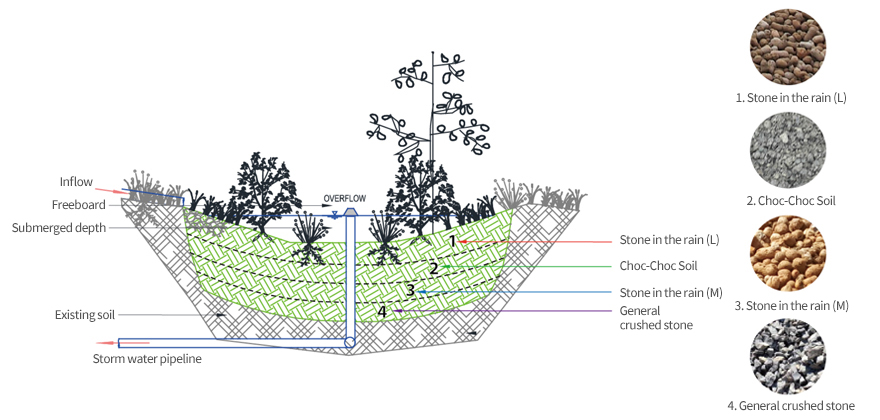It is a technology element that effectively manages rainwater and improves the urban landscape by trapping rainwater as much as possible in the ground and allowing it to permeate. An artificial drainage system is unnecessary by maintaining the optimum permeability of moist soil, but the facility can be connected with vegetation waterways

| BOD | T-N | T-P | Runoff reduction(Q) | TSS | Etc |
|---|---|---|---|---|---|
| 23~54% | 22~49% | 17~81% | 40% | 80% | Zn 99% Pb 99% |
* Bioretention Basin Practics (Vinginia Tech, 2011)
* Citation of rainwater gardens in the Technical Guidelines for Total Water Pollution Control (2012.8)
* The Practice of Low Impact Development(HUD's Office of Policy Development and Research, 2003)
* Dane county erosion control and stormwater management manual(2007.3)